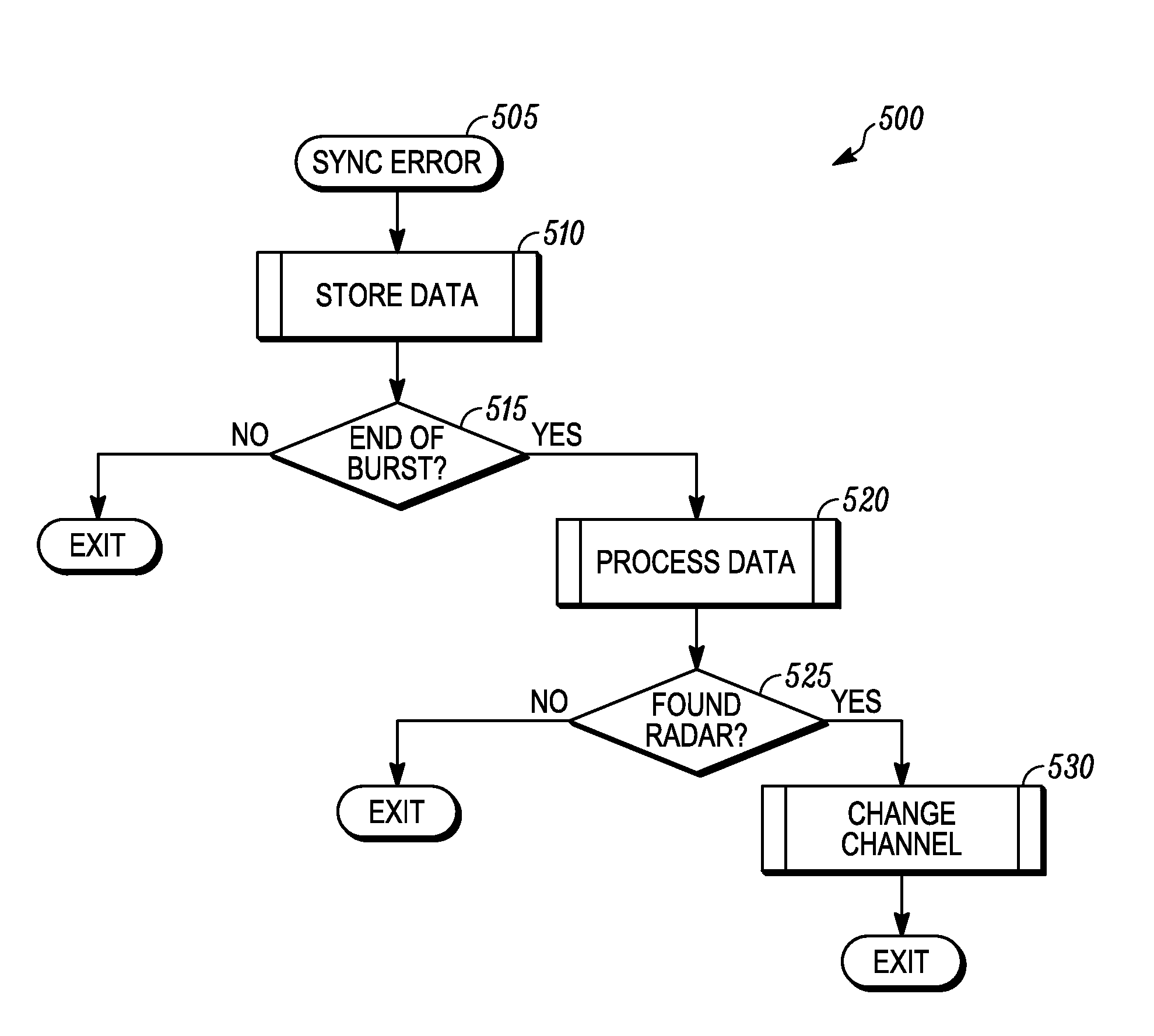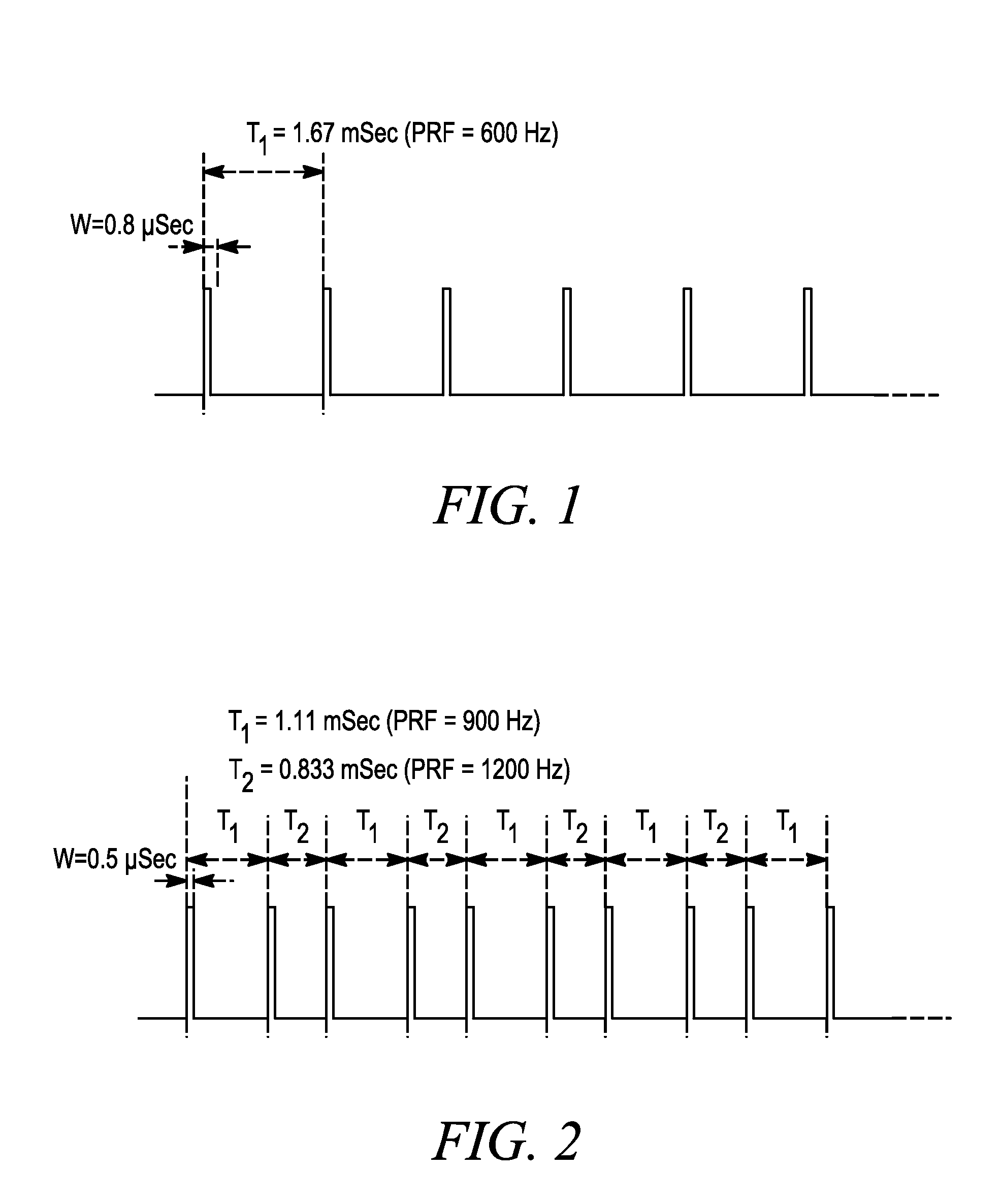Method for detection of radar signals
a radar signal and detection method technology, applied in the field of wireless communication, can solve the problems of large amount of computation, synchronization errors, and identification of only those patterns, and achieve the effect of reducing the number of computations
- Summary
- Abstract
- Description
- Claims
- Application Information
AI Technical Summary
Problems solved by technology
Method used
Image
Examples
Embodiment Construction
[0017]In accordance with some embodiments presented herein, a method includes collecting a set of information about received interfering signals until the End-Of-Burst (EOB) condition is identified. When the EOB is identified, the set information about the received train of interfering signals is processed. The algorithm selects the time interval between two pulses as a possible Pulse Repetition Interval (PRI) and checks if the same time interval or a multiple of it can be found between other pulses in the collected set, with some small acceptable error. Pulses matching the criteria are considered as potential radar pulses. When at least one pulse has been identified as a potential radar pulse for a number of times larger than a predefined limit, it is concluded that that pulse has been generated by a radar installation.
[0018]The characteristics of radar signals depend on the scope of the measurement. Radar signals are transmitted as pulses. A pulse is a continuous transmission of a...
PUM
 Login to View More
Login to View More Abstract
Description
Claims
Application Information
 Login to View More
Login to View More - R&D
- Intellectual Property
- Life Sciences
- Materials
- Tech Scout
- Unparalleled Data Quality
- Higher Quality Content
- 60% Fewer Hallucinations
Browse by: Latest US Patents, China's latest patents, Technical Efficacy Thesaurus, Application Domain, Technology Topic, Popular Technical Reports.
© 2025 PatSnap. All rights reserved.Legal|Privacy policy|Modern Slavery Act Transparency Statement|Sitemap|About US| Contact US: help@patsnap.com



